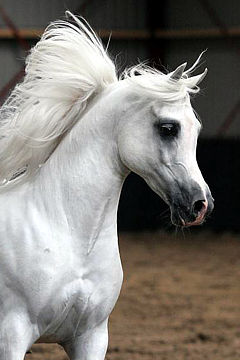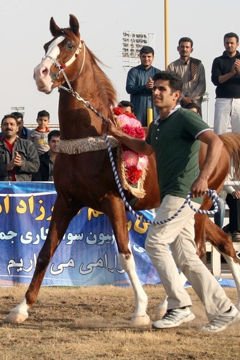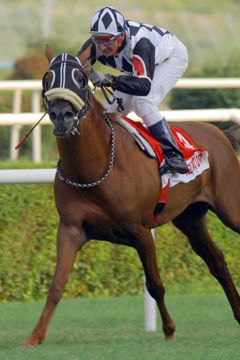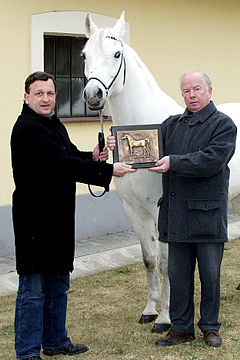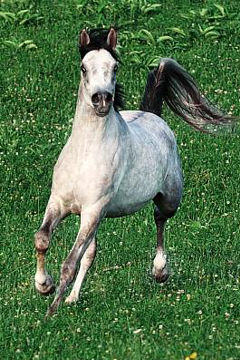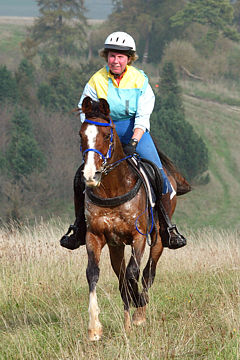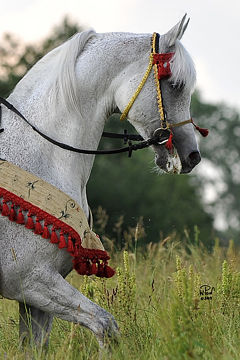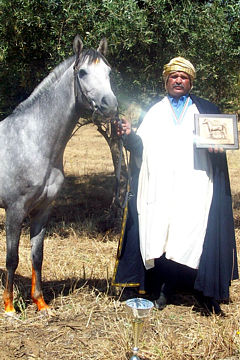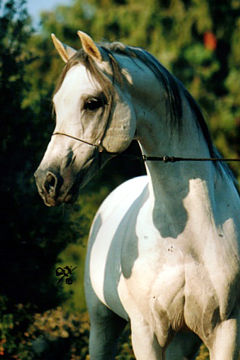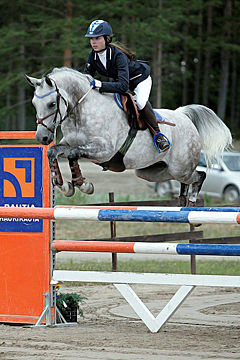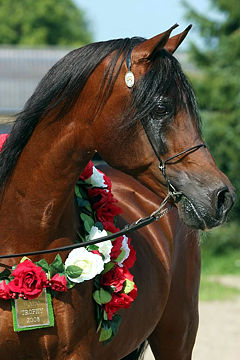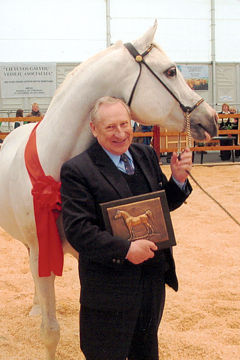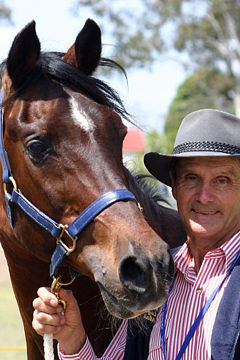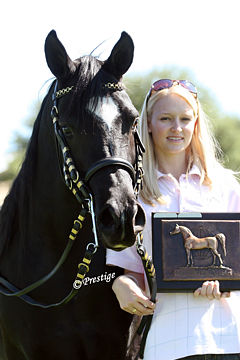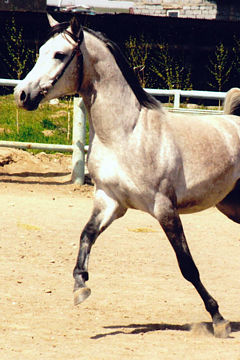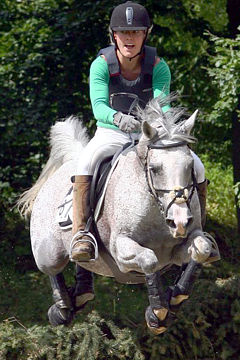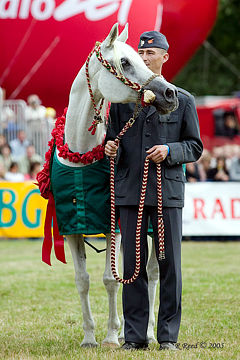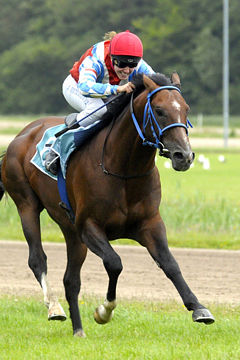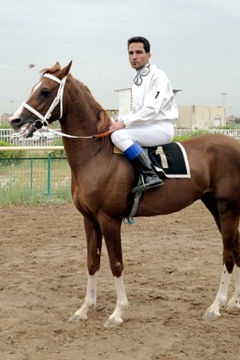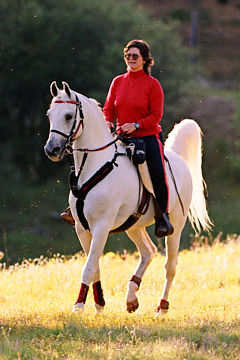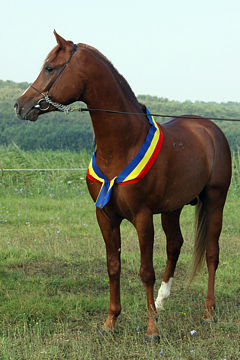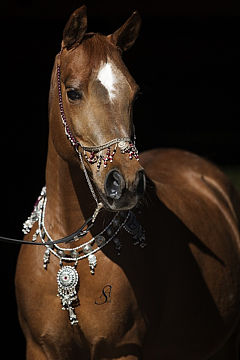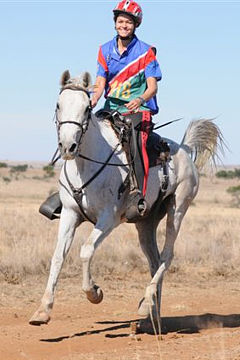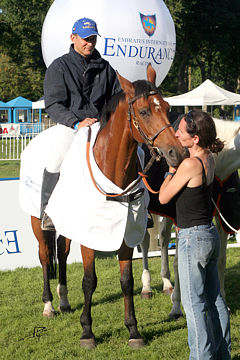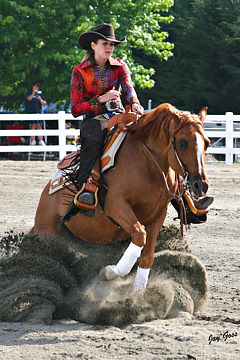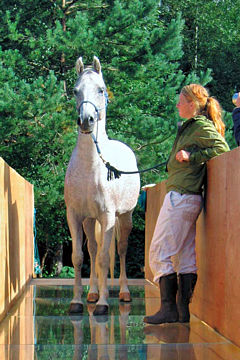Author: Magdalena Pieszka, Poland
In the first days of after birth, foals are normally with their mothers and their only nutrition is mare’s milk which is the best food for them, as it contains all the nourishment necessary for the proper growth and development of a young foal. Researchers show that the quantity of milk drunk by foals during the first weeks of life does not depend on the foal’s behaviour during suckling. One of the most important things that has an effect on the milk’s quantity and quality is the feeding of the mares. The most important thing for any foal is to receive the necessary components in the proper proportions and quantity, because the growth rate of young foals is at its most intensive during that time.
The level of particular components in mares milk is respectively low compared to the milk of other domestic animals. That is why foals duplicate their weight at birth later than is the case for the progeny of other domestically-bred animals.
Table 1. Building components in milk of domestic mammals and their growth rate. (by Krzymowski 1998)
| Animal species | Number of days necessary to duplicate the weight at birth | Protein in milk(%) | Ash in milk (%) |
|---|---|---|---|
| Man | 180 | 1.6 | 0.2 |
| Horse | 60 | 2.2 | 0.5 |
| Cow | 47 | 3.5 | 0.8 |
| Sheep | 10 | 6.5 | 1.0 |
| Pig | 8 | 7.3 | 1.0 |
| Dog | 8 | 7.1 | 1.3 |
| Cat | 7 | 9.1 | 0.6 |
| Rabbit | 6 | 14.0 | 2.2 |
The quantity and rate of all milk components affects the intensity and correct growth and development of all mammals, horses included. Lambs and piglets fed with milk containing similar composition (about 1200 kcal, about 6% of protein and about 0,8% of ash) duplicate their birth weight after about 8-10 days but foals drinking milk with a 2/3 lower components content duplicate their weight at birth after 60 days of life.
Mares’ milk composition changes during lactation. These changes could be connected to the physiological status of the mare, including the mares’ heat cycles and pregnancy. These changes could have an indirect effect on foals’ growth and development. In the first hours after parturition the mammary gland produces colostrum which is much richer in dry matter, protein, fat, vitamins and minerals (except calcium and phosphorus) but poorer in lactose. The main advantage of colostrum and the reason for its great value are the presence of immunoglobulins IgA, IgM, IgG and the enzymes catalase, lipases, lactases, proteinases, peptydases, phosphatases and reductases. Colostrum has a mild purgative effect on foals’ intestines which helps to clean up the intestines and excrete the meconium. The transformation of colostrum into milk takes place in the first 48 hours after parturition.
Milk’s components could be divided into 2 main groups: building components and energy components. Protein and ash are classified as 1 group and fat and carbohydrates as another group.
Table 2. Composition of domestic animals’ milk. (by Bobek 1989).
| Animal species | Milk components [w %] | |||||
|---|---|---|---|---|---|---|
| Water | Dry matter | Protein | Fat | Lactose | Ash | |
| Cow | 87.8 | 12.2 | 3.5 | 3.5 | 4.5 | 0.8 |
| Horse | 90.0 | 10.0 | 2.2 | 1.1 | 6.1 | 0.5 |
| Sheep | 82.5 | 17.5 | 6.5 | 6.1 | 4.5 | 1.0 |
| Goat | 85.8 | 14.2 | 4.4 | 4.4 | 4.6 | 0.8 |
| Pig | 80.0 | 20.0 | 7.3 | 8.4 | 3.3 | 1.0 |
In wild horses lactation lasts for 8-9 months or even longer. Sometimes milk secretion does not stop even after the birth of the next foal and mares can feed two foals together for some time. But in domestic horses lactation lasts for about 6 months and its end is controlled by man. In the artificial conditions created for horses by man, a mare normally gives birth and rears one foal per year. Pregnancy in a mare normally lasts for 333 days, or about 11 months, so to fulfil the above mentioned condition the mare must be covered in the first heat cycle after she has given birth. So we can say the broodmare is pregnant nearly all the time (except the short period from parturition to covering). If man lets her feed her foal longer than 6 months, then the mare would be overexploited. That is why it is said that lactation should last no longer than 6-7 months, or in other words during the low pregnancy period when the fetal growth is not so intensive (compare to the last months of pregnancy).
Composition of Arabian Mares’ Milk: Because foals normally drink only milk during the first month of their life it is necessary to know exactly the mares’ milk composition.
All the Arabian mares taken under consideration in my research were bred by Michałów Stud, Poland. All of them were able to secrete and produce milk and had a proper maternal instinct. Also all the foals had the normal instincts of searching for the teats and had a proper suckling impulse. On average the first suckling took place about 115 minutes after birth and about 65 minutes after first standing up (the fastest foal: 35 and 5 minutes; the slowest foal: 210 and 125 minutes). It is necessary to mention the first meconium excretion. Colostrum plays very important role in that process. On average the first meconium excretion took place about 180 minutes after birth and about 65 minutes after first suckling (the fastest foal: 5 minutes after birth before first suckling; the slowest foal: 245 minutes after birth and 155 minutes after first suckling). Nearly half the number of new born foals excreted meconium before first suckling. Young foals were drinking milk very frequently – more than once per hour – which means more than 24 times per day! Such frequent emptying of the mammary gland encourages that gland to produce more and more milk. In the studied mares the average daily milk production during the first 30 days after parturition was about 250 litres, which means nearly 10 litres per day.
Fat
The average level of fat in Arabian mares’ milk during the studied period was 1,67%. The curve for the fat level was not regular – the highest level was observed at 2 and 22 days after parturition (1,81%) and the lowest on the 14th day of lactation (1,54%). It is possible to observe the decreasing tendency during the first 6 days after parturition. (Fig. 1)

Fig. 1. Fat level in Arabian mares’ milk during first month of lactation
In the studied period the average level of protein was 2,53%. The curve drawn for the protein level showed a significant decreasing tendency during the study period. The highest level was observed on day 2 of lactation – 3,43% and the lowest at 30 days – 2,09%. (Fig. 2)

Fig. 2. Protein level in Arabian mares’ milk during first month of lactation
The average level of milk sugar in Arabian mares’ milk was 6,19%. The curve drawn for that component showed a significant increasing tendency. The most intensive increase was noted between 8 and 10 days of lactation. The highest level of lactose was observed at 30 days of lactation – 6,3%% and the lowest at day 2 – 5,94%. (Fig. 3)

Fig. 3. Lactose level in Arabian mares’ milk during first month of lactation
In the studied period the average level of dry matter was 11,09%. The curve drawn for the dry matter level showed a significant decreasing tendency during all the studied time but the most intensive was between days 2 and 8. The highest level was observed at day 2 of lactation – 11,91% and the lowest at day 30 – 10,72%. (Fig. 4)

Fig. 4. Dry matter level in Arabian mares’ milk during first month of lactation
In the studied milk of Arabian mares during 30 days of lactation, the average level of calcium was 913,85 mg/kg of milk. The rate of calcium to phosphorus was 1,24;1 which means for 1 unit of phosphorus there are 1,24 units of calcium. The curve drawn for the calcium level was not regular – the lowest level was observed at day 2 of lactation – 879,63 mg/kg of milk and the highest at 10 and 22 days – 947,69 and 99,268 mg/kg of milk. (Fig. 5)

Fig. 5. Calcium level in Arabian mares’ milk during first month of lactation
The average level of phosphorus was 732,24 mg/kg of milk in the studied milk of Arabian mares during 30 days of lactation. The curve drawn for the phosphorus level showed a significant decreasing tendency – the highest level was observed at day 2 of lactation – 1066,14 mg/kg of milk and the lowest at 18 days – 615,03 mg/kg of milk. (Fig. 6)

Fig. 6. Phosphorus level in Arabian mares’ milk during first month of lactation
In the studied milk of Arabian mares during 30 days of lactation the average level of magnesium was 95,86 mg/kg of milk. The curve drawn for the magnesium level showed a significant decreasing tendency especially between 4 and 12 days – the highest level was observed at day 4 of lactation – 118,91 mg/kg of milk and the lowest at 18 days – 84,61 mg/kg of milk. (Fig. 7)

Fig. 7. Magnesium level in Arabian mares’ milk during first month of lactation
Arabian mares were characterized by an average level of natrium of 132,04 mg/kg of milk. After drawing the curve for this mineral it was stated that during first 12 days the level was decreasing significantly with a little increase at 14 and 16 days. The highest level was observed at day 2 of lactation – 164,1 mg/kg of milk and the lowest at 18 days – 119,52 mg/kg of milk. (Fig. 8)

Fig. 8. Natrium level in Arabian mares’ milk during first month of lactation
During the first 30 days of lactation the milk of Arabian mares was characterized by an average level of potassium of 631,82 mg/kg of milk. After drawing the curve for this mineral it was stated that during first 6 days and then between 14 and 18 days the level was decreasing significantly. But in the last days of observation the tendency was increasing. The highest level was observed at day 2 of lactation – 767,44 mg/kg of milk and the lowest at 18 days – 567,68 mg/kg of milk. (Fig. 9)

Fig. 9. Potassium level in Arabian mares’ milk during first month of lactation
In the studied milk of Arabian mares during 30 days of lactation the average level of iron was 1,68 mg/kg of milk. The curve drawn for calcium level was not regular – the lowest level was observed at 4 and 26 days of lactation – 1,44 and 1,31 mg/kg of milk and the highest at 6 and 22 days – 2,14 and 2,12 mg/kg of milk. (Fig. 10)

Fig. 10. Iron level in Arabian mares’ milk during first month of lactation
During the first 30 days of lactation the milk of Arabian mares was characterized by an average level of zinc of 2,55 mg/kg of milk. After drawing the curve for this mineral it was stated that its level was decreasing significantly during all the studied period of lactation especially from 2 to 14 days. The highest level was observed at day 2 of lactation – 3,65 of milk and the lowest at 26 days – 2,21 mg/kg of milk. (Fig. 11)

Fig. 11. Zinc level in Arabian mares’ milk during first month of lactation
Arabian mares were characterized by an average level of copper of 0,5 mg/kg of milk. After drawing the curve for this mineral it was stated that the level was decreasing a little. The highest level was observed at day 2 of lactation – 0,75 mg/kg of milk and the lowest at 30 days – 0,41 mg/kg of milk. (Fig. 12)

Fig. 12. Copper level in Arabian mares’ milk during first month of lactation
In the studied milk of Arabian mares during 30 days of lactation the average level of lithium was 0,94 mg/kg of milk. The curve drawn for this mineral level was not regular – the lowest level was observed at 2 and 24 days of lactation – 0,91 and 0,9 mg/kg of milk and the highest at 10 days – 1,01 mg/kg of milk. (Fig. 13)

Fig. 13. Lithium level in Arabian mares’ milk during first month of lactation
Lactation in mares is one of the most important factors of horse breeding. Most breeders know the problems connected to keeping alive and rearing an orphan foal. One of the ways of feeding the orphan foal is giving him a milk substitute formula with a composition as similar to the composition of mare’s milk as possible. The composition of the milk is genetically conditioned and depends mainly on the breed, the lactation period and the subsequent pregnancy.
Results of many researches concerning mares’ milk composition are showed below. These results are necessary to compare the Arabian mares’ milk with milk of other horses breeds.
Table 3. Concentration of some components in mares milk according to different breeds (in %)
| Author and year of data Publication | Mare’s breed | Fat | Protein | Lactose | Dry matter |
|---|---|---|---|---|---|
| Doreau et al 1990 | Coldblood | 1.96-2.46 | 2.10-2.44 | 6.34-6.58 | – |
| Kubiak et al 1990 | Quarter Horse | 0.27-0.39 | 1.45-1.69 | – | 9.63-9.92 |
| Smolders et al 1990 | Different breeds | 0.57-1.29 | 2.46-1.54 | 3.19-6.62 | – |
| Waechli et al 1990 | Different breeds | 1,08 | |||
| Doreau 1991 | Coldblood | 0.95-1.75 | 1.87-2.60 | 6.07-6.63 | – |
| Fuentes Garcia et al 1991 | Andalusian | 2.36-2.43 | 1.88-3.89 | 5.41-6.58 | 13.40-12.17 |
| Fuentes Garcia et al 1993 | Andalusian and Arabian |
2.32-2.43 1.89-2.01 |
3.12-3.84 2.35-3.33 |
5.39-5.83 5.57-6.13 |
12.65-13.04 11.76-12.10 |
| Doreau et al 1993 | Coldblood | 1.27-2.10 | 1.87-3.06 | 6.00-6.63 | – |
| Mariani et al 1993 | Standardbred | 0.31-2.35 | 1.77-4.30 | 6.08-7.44 | 9.74-13.55 |
| Pagliarini et al 1993 | Italian and German breeds | 1.05 | 2.03 | 7.33 | 9.09 |
| Kielwein 1994 | Different breeds | 1.90 | 2.50 | 6.20 | 11.20 |
| Csapo-Kiss et al 1994 | Different breeds | – | 2.31-16.41 | – | – |
| Osapo-Kiss et al 1995 | Different breeds | 1.25-2.91 | – | – | 10.42-25.57 |
| Pool Anderson 1994 | Different breeds | 0.50-0.74 | 1 .28-2.41 | 6.31-6.55 | 10.10-10.90 |
| Lundberg 1995 | Different breeds | 1.87-2.00 | 1.82-2.45 | 6.20-6.50 | – |
| Martuzzi et al 1995 | Different breeds | 0.31-2.19 | 1.77-4.31 | 6.08-7.44 | 9.74-13.55 |
| Manani et al 1996 | Italian breeds | 0.94-1.16 | 2.44-2.48 | 6.64-6.66 | 10.55-10.79 |
| Marconi et al 1998 | Different breeds | 1.47 | 2.15 | 6.03 | 10.3 |
| Prateek et al 1998 | Indian breeds | 1.36 | 1.96 | 6.08 | – |
| Enbergs et al 1999 | Different breeds | 2.03 | 1.67 | – | – |
Table 4. Macro-elements content in mares’ milk in mg/kg of milk
| Author and year of data publication | Mares’ breed | Ash [%1] | Calcium [mg/kg] | Phosphorus [mg/kg] | Magnesium [mg/kg] | Natrium [mg/kg] | Potassium [mg/kg] |
|---|---|---|---|---|---|---|---|
| Linton (1937) | Different breeds | 0.35-0.26 | 1265-945 | 1205-865 | – | – | – |
| Holmes et al (1947) | Different breeds | – | 1060-1020 | 710-530 | 112-90 | – | 790-640 |
| Neseni et al (1958) | Different breeds | 0.45-0.30 | 847-485 | 580-467 | – | 112-75 | 624-303 |
| Ullrey et al (1966) | Different breeds | 0.46-0.27 | 1186-614 | 358-216 | 65-43 | 186-161 | 580-370 |
| Shutton et al (1977) | Different breeds | – | 1000-1200 | 500-900 | – | – | – |
| Oftedal i Jennes (1983) | Different breeds | 0.42 | – | – | – | – | – |
| Kulisa (1986) | Arabian and Llalopolski | 0.295 | – | 394 | 29 | – | – |
| Schryver et al (1986) | Different breeds | 0.32-0.61 | 700-1345 | 540-943 | 43-118 | 115-237 | 341-664 |
| Doreau (1990) | Cold blood | – | 970-1350 | 360-460 | – | – | – |
| Smolders et al (1990) | Different breeds | 0.69-1.34 | 410-880 | – | – | – | – |
| Anderson (1991) | Quarter Horse | – | 787 | 504 | 75 | 171 | 701 |
| Doreau (1991) | Coldblood | – | 500-1300 | 200-1200 | 40-110 | 20-70 | 300-600 |
| Manani et al (1993) | Different breeds | 0.34-0.47 | 702-996 | 421-632 | 48-79 | – | – |
| Pagliarini et al (1995) | Different breeds | – | 748 | 513 | – | – | – |
| Csapo-Kiss et al (1994) | Different breeds | 0.45-0.562 | 823-935 | 499-638 | 66-86 | 167-177 | 517-709 |
| Martuzzi et al (1995) | Different breeds | 0.46-0.52 | 1016 | 616 | 71 | 168 | 582 |
| Marconi i wsp. (1998) | Different breeds | – | 647 | – | 69 | 200 | 626 |
Table 5. Micro-elements content in mares milk in mg/kg of milk
| Author and year of data | Mares’ breed | Zinc | Iron | Copper | Lithium |
|---|---|---|---|---|---|
| UIIrey et al 1966 | Different breeds | 2.80 | 0.95 | 0.83 | – |
| Lonnerdal et al 1981 | Different breeds | 1.20 | 0.30-1.00 | 0.20-0.40 | – |
| Underwood 1981 | Different breeds | – | – | 0.20-0.36 | – |
| Kulisa 1986 | Arabian and Malopolski | 0.89 | 1.46 | 0.25 | – |
| Schryver et al 1986 | Different breeds | – | 0.56 | 2.20 | – |
| Doreau et al 1990 | Cold blood | 0.90-6.40 | 0.27-1.46 | 0.20-1.00 | – |
| Anderson 1992 | Quarter Horse | 1.84 | 0.22 | 0.16 | 0.15 |
| Csapo-Kiss et al 1995 | Different breeds | 1.99-2.08 | 1.00-1.58 | 0.23-0.25 | – |
Mares’ milk composition is not a very well known subject. It is especially important because it is very similar to human milk composition so apart from the value for horse breeding it could be also used for the treatment of allergic children and possibly as a cure for some illnesses.

